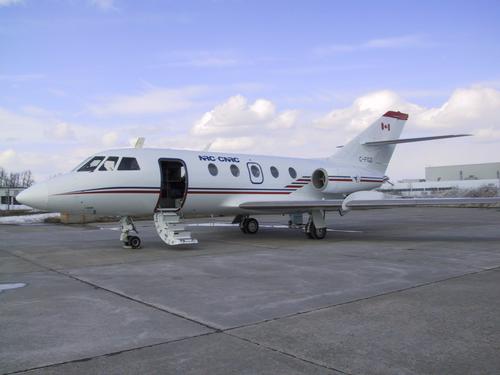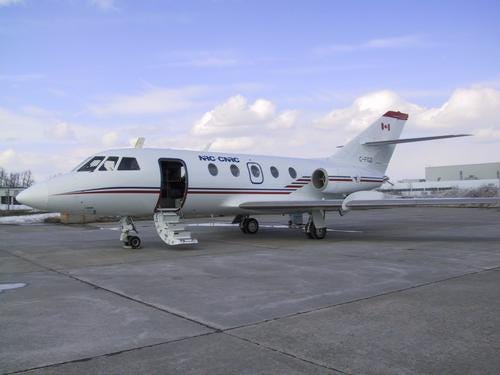First Civil Jet Flies on 100 Percent Non-Food Biofuel
November 7, 2012

The first civil jet to fly on 100 percent biofuel that meets petroleum jet fuel specifications took to the skies Oct. 29 in Ottawa, Ontario. Other commercial jets, such as Boeing's 787 Dreamliner, have flown using biofuel blended with petroleum-based jet fuel. But this flight, engineered by the National Research Council (NRC) of Canada, is the first worldwide to use unblended biofuel in a commercial, non-military aircraft (a Falcon 20), according to the NRC.
First-generation biofuels based on crops have been under fire for some time because of their competition with human food and animal feed. Recently, the European Commission (EC) called for even stricter limits on the amount of food crops that can be turned into biofuels used in transportation. The EC is also promoting the use of second- and third-generation biofuels produced from algae, straw, and waste feedstocks.

The biofuel used in the flight is not based on a food crop. Instead, it was made from oilseed (Brassica carinata), a mustard and canola relative, developed by Applied Research Associates and Agrisoma Biosciences for the commercial airline industry. The fuel, called ReadiJet, was transformed by Applied Research Associates and Chevron Lummus Global. Applied Research Associates says it has developed a new proprietary process, catalytic hydrothermolysis, to produce the fuel from plants and algae. According to the company, the fuels can be used in existing turbine and diesel engines designed for petroleum fuels.
Agrisoma Bioscience Inc. has commercialized the industrial oilseed crop as Resonance Energy Feedstock. It's designed to grow in semi-arid regions, such as the southern prairies in western Canada, and is now being produced on a commercial scale. This year, more than 40 commercial farmers will grow the crop on more than 6,000 acres to make the biofuel. Agrisoma said in a press release that, to date, flights on biofuels have used blends with, at most, 50 percent biofuel combined with petroleum-based jet fuel.
The Falcon 20 aircraft that flew on the biofuel is a twin-engine commercial jet used by the National Research Council for conducting experiments. For example, the aircraft's hydraulic and fuel systems have been modified so it can perform parabolic flight maneuvers to achieve zero gravity for 15 to 25 seconds. The Falcon 20 also provides electrical power and data acquisition systems.
In the recent test flight, the Falcon 20 was followed by a T-33 jet aircraft, which collected information on the emissions produced by the oilseed-based biofuel. The NRC's research scientists will analyze this data to gauge the fuel's environmental impact.
Preliminary results are expected in the next few weeks. The research project is funded by the Canadian government's Clean Transportation Initiatives, and the Green Aviation and Development Network.
Related posts:
About the Author(s)
You May Also Like



